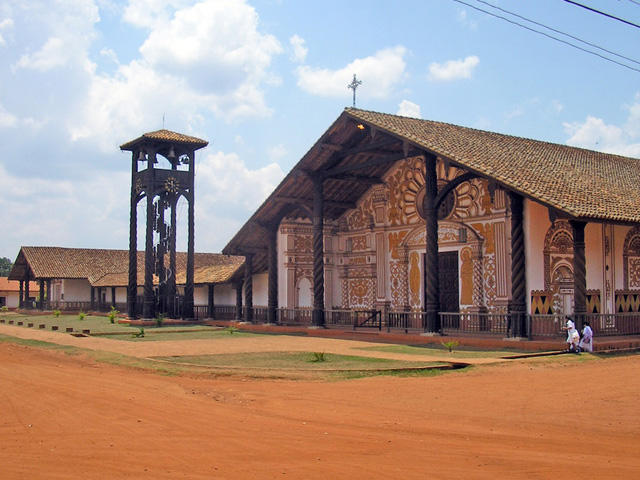Sacred song from the selva
SFEMS’ Sunday afternoon series at the California Jazz Conservatory opens on October 20, with a new ensemble “Beneath a Tree” performing some rarely heard music from the Jesuit missions of eastern Bolivia.

One of the unexpected gifts of the early music revival has been the large corpus of Renaissance, baroque, and Classical music from Latin America that has been discovered and now is becoming more widely performed and appreciated. The archives of metropolitan cathedrals in Mexico, Guatemala, Colombia, Peru, Bolivia, Cuba, and other countries are treasure troves of historical works, many copied directly from European sources and many others written by local chapel masters, some from Spain, Portugal, and elsewhere, others native born.
While the larger colonial cities—whose church establishments had munificent resources to stage large-scale, concerted masses and polychoral motets—account for the majority of this music, there was another, unique tradition that developed at the remote Jesuit missions in the interior of South America.
During the 17th and 18th centuries, what is now Paraguay, eastern Bolivia and southwestern Brazil was sparsely settled rainforest, scrubland and savanna. Its Guarani-speaking inhabitants lived in small villages and practiced shifting agriculture. The empires of both Spain and Portugal encroached on this region and coveted both its natural resources and its native people for slaves. Jesuit missionaries who entered the area set up a network of reducciones, gathering the native people into larger settlements based around a mission church. Their goal was both to evangelize the Guarani, converting them to Christianity, and to protect them from slave raiders. As in other parts of the New World, they made extensive use of music in their services and brought European instruments on which to perform it, giving birth to Bolivian Baroque Music. After the expulsion of the Jesuits in 1767, the missions fell into disrepair, but remarkably, the music persisted. Despite the passage of more than two-and-a-half centuries, the musical legacy of the Baroque has remained vibrant in the smallest of villages, with songs and manuscripts passed down from generation to generation.

Much of this music was written by the priests themselves, many of whom, like Domenico Zipoli, were accomplished composers; some was composed by Guarani studying European music with the priests. While many of the works are anonymous, copyists sometimes signed the scores “maestro capilla” (chapel master), the equivalent of the term Kapellmeister used by J.S. Bach and many other baroque composers. The body of work found and cataloged is now known as Bolivian or Mission Baroque. The tradition of this music continues to this day and it is an important part of the villages’ daily life.
In the 1990s, Piotr Nawrot, a musicologist and Jesuit priest based in Bolivia, went searching for evidence of this music, hoping some scores had survived. He spoke to one village elder, who questioned him for hours about his faith, his intentions, his life views, etc. Satisfied with Piotr’s responses, he handed him thousands of manuscripts which had survived. Piotr proceeded to catalog and publish these, giving the world access to the music’s beauty and joyous nature.
Violinist Gail Hernández Rosa, who organized the upcoming concert, was introduced to this music by Ashley Solomon, head of the Baroque Department at the Royal College of Music in London. His group, Florilegium, with whom she used to perform, recorded much of it in two volumes titled Bolivian Baroque. Through Ashley and his love of this project, Gail was able to make contact with Piotr Nawrot and obtain scores for the works to be performed at CJC on October 20. None of these works were part of Florilegium’s original recording project.
Beneath a Tree—Baroque to Folk features Michele Kennedy, soprano; Gail Hernández Rosa, violin; Daria D’Andrea, violin; Frédéric Rosselet, cello; Daniel Turkos, bass; and Melody Hung Nishinaga, harpsichord. Their performance takes place at Hardymon Hall@The Jazzschool, 2087 Addison Street in Berkeley, starting at 4:30 p.m. The CJC is a wonderful venue, offering a casual and intimate environment where the audience can relax with a light meal and sip a glass of wine or a cup of coffee while enjoying the concert.
Tickets for this performance are $25. Please note that all tickets for the SFEMS-CJC concerts are sold directly by the Jazz Conservatory, not by SFEMS. You may purchase advance tickets online or at the door.












